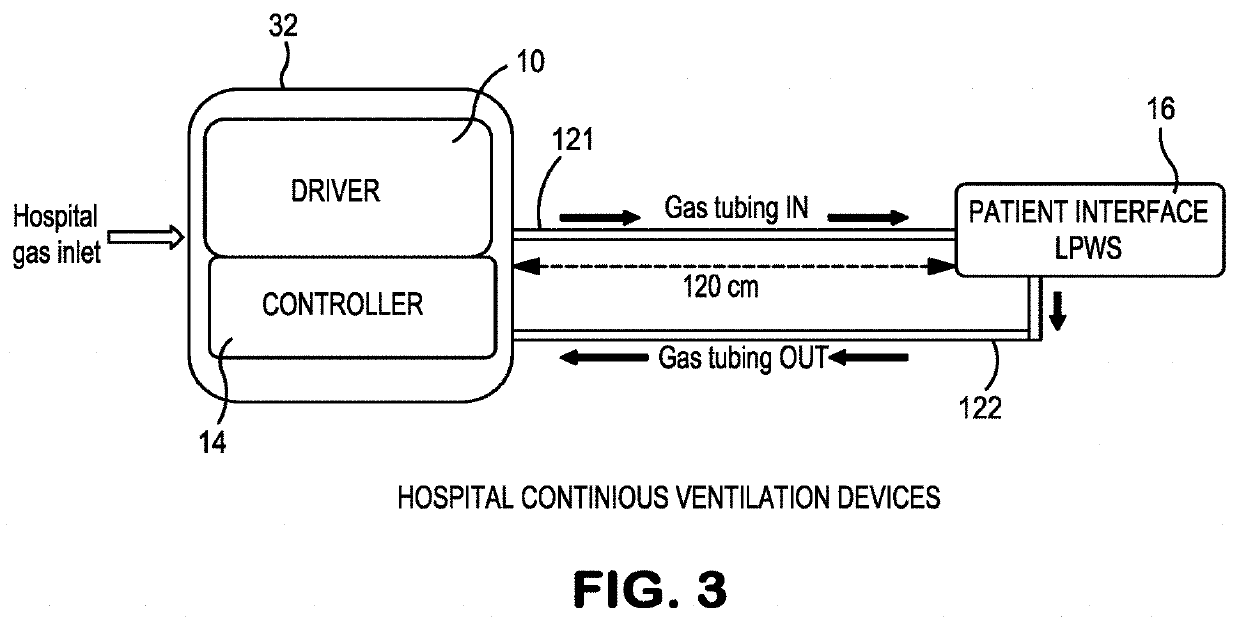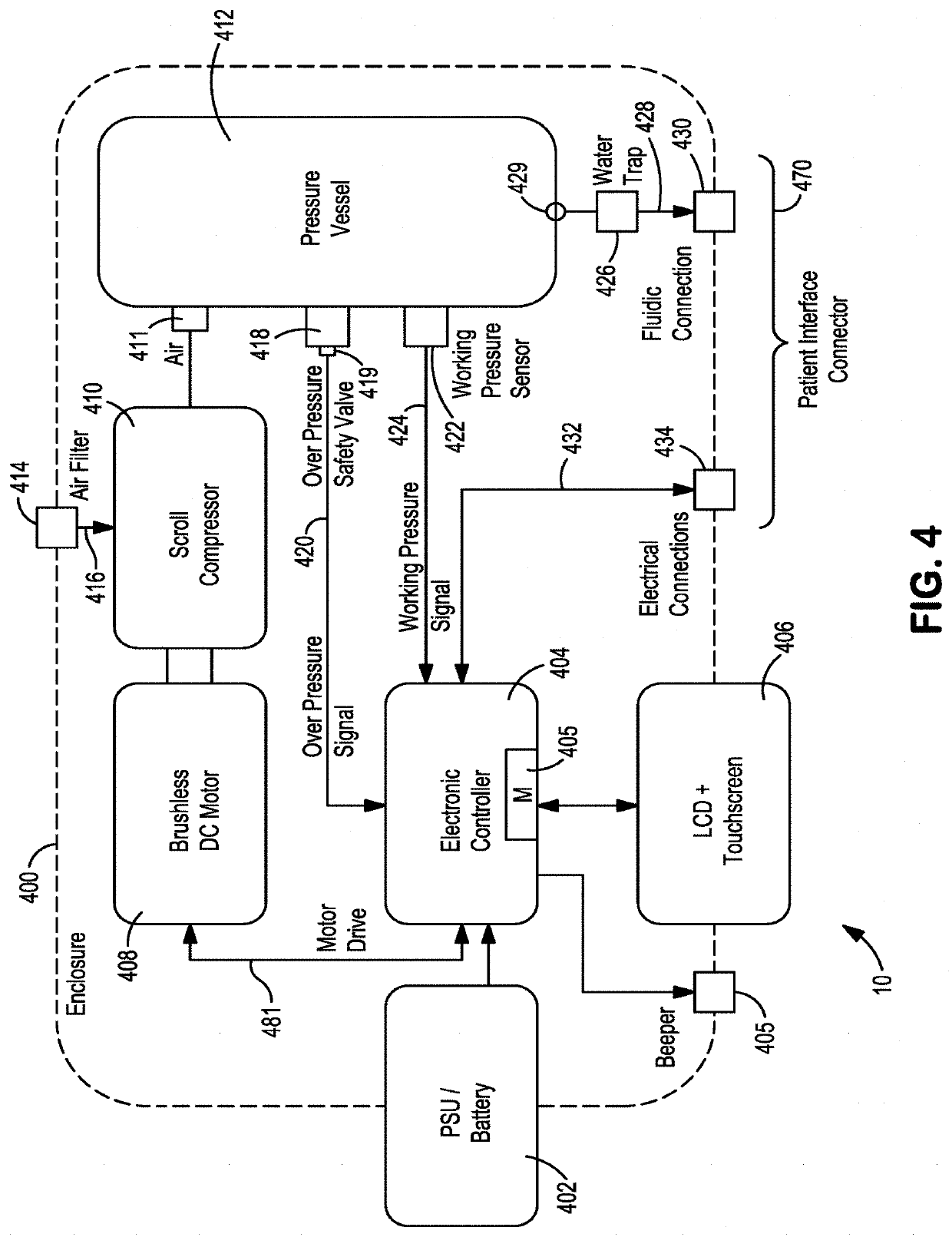Method and apparatus for providing percussive ventilation therapy to a patient airway
a technology for providing percussive ventilation and patient airways, which is applied in the direction of medical devices, medical atomizers, medical devices, etc., can solve the problems of reducing the body's ability to remove mucus, increasing mucus production, and substantial mortality and morbidity, so as to reduce complexity, facilitate mucus mobilization, and effective system and method
- Summary
- Abstract
- Description
- Claims
- Application Information
AI Technical Summary
Benefits of technology
Problems solved by technology
Method used
Image
Examples
Embodiment Construction
[0050]In overview, the present embodiments provide a Home Therapy and / or Hospital Therapy apparatus and method whereby percussive ventilation therapy is provided to at least one patient's airway. While the present invention has particular applicability to human patients, the preferred embodiments may be of use to any animal patient(s) as well.
[0051]“Adaptive Dynamic Subtidal Ventilation” (ADSV) technology in this specification may include, but is not limited to, one or more of, or any combination of structure and / or function whereby the Patient Interface Device is: Adaptive because the delivered flow will permanently adapt to patient physiologic parameters; Dynamic because it will have a waveform that brings energy to recruit the airways and will affect the hemodynamic (the permanent change in flow / pressure / volume is dynamic); Subtidal because it will deliver small volumes called subtidal volumes; and Ventilation because it will affect gas exchange, oxygenate, and ventilate.
[0052]A ...
PUM
 Login to View More
Login to View More Abstract
Description
Claims
Application Information
 Login to View More
Login to View More - R&D
- Intellectual Property
- Life Sciences
- Materials
- Tech Scout
- Unparalleled Data Quality
- Higher Quality Content
- 60% Fewer Hallucinations
Browse by: Latest US Patents, China's latest patents, Technical Efficacy Thesaurus, Application Domain, Technology Topic, Popular Technical Reports.
© 2025 PatSnap. All rights reserved.Legal|Privacy policy|Modern Slavery Act Transparency Statement|Sitemap|About US| Contact US: help@patsnap.com



